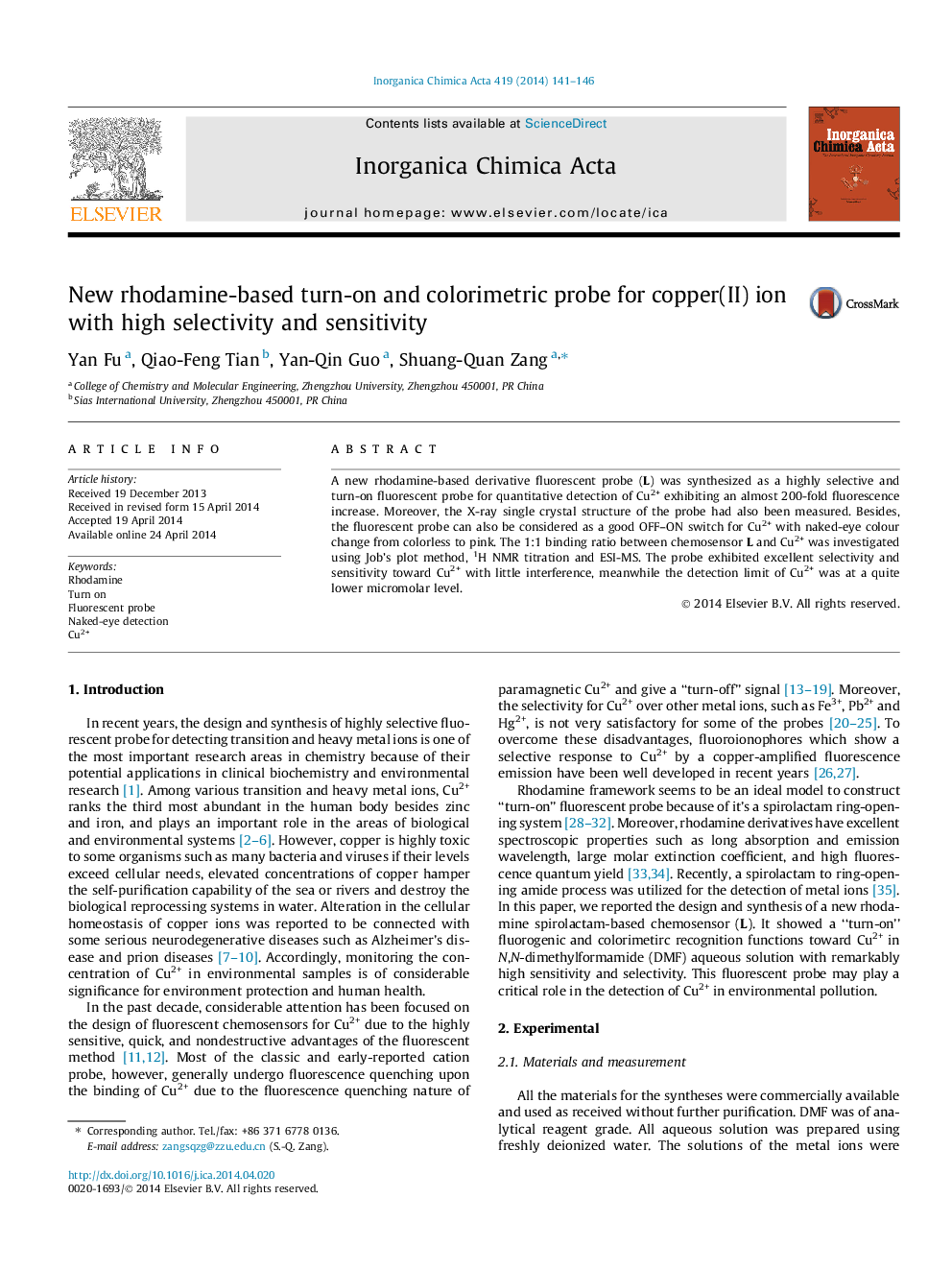| Article ID | Journal | Published Year | Pages | File Type |
|---|---|---|---|---|
| 1309616 | Inorganica Chimica Acta | 2014 | 6 Pages |
•A new fluorescent probe (L) exhibited significant fluorescence enhancement upon binding with Cu2+ over 200-fold.•L showed naked-eye detection of Cu2+ from colorless to pink.•L exhibited good selectivity for Cu2+ over other metal ions with little interference.
A new rhodamine-based derivative fluorescent probe (L) was synthesized as a highly selective and turn-on fluorescent probe for quantitative detection of Cu2+ exhibiting an almost 200-fold fluorescence increase. Moreover, the X-ray single crystal structure of the probe had also been measured. Besides, the fluorescent probe can also be considered as a good OFF–ON switch for Cu2+ with naked-eye colour change from colorless to pink. The 1:1 binding ratio between chemosensor L and Cu2+ was investigated using Job’s plot method, 1H NMR titration and ESI-MS. The probe exhibited excellent selectivity and sensitivity toward Cu2+ with little interference, meanwhile the detection limit of Cu2+ was at a quite lower micromolar level.
Graphical abstractA new rhodamine-based derivative fluorescent probe (L) was synthesized as a highly selective and turn-on fluorescent probe for quantitative detection of Cu2+ exhibiting an almost 200-fold fluorescence increase. Moreover, the X-ray single crystal structure of the probe had also been measured. Besides, the fluorescent probe can also be considered as a good OFF–ON switch for Cu2+ with naked-eye colour change from colorless to pink. The 1:1 binding ratio between chemosensor L and Cu2+ was investigated using Job’s plot method, 1H NMR titration and ESI-MS. The probe exhibited excellent selectivity and sensitivity toward Cu2+ with little interference, meanwhile the detection limit of Cu2+ was at a quite lower micromolar level.Figure optionsDownload full-size imageDownload as PowerPoint slide
